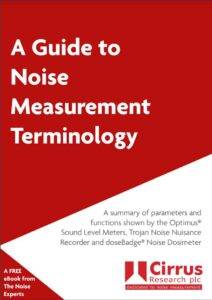Why do instrument standards have different dates?
I’ve been asked recently to confirm if a sound level meter is marked as meeting IEC 61672-1:2002, does it also meet BS EN 61672-1:2003?
Instruments such as sound level meters are designed to meet certain standards and these are published by a range of International, Regional and National standards organisations.
In the case of sound level meters, the standards that we work to are usually developed and published initially by the International Electrotechnical Committee or IEC.
These are usually then adopted as a European Norm (an EN standard) and published by the European Committee for Electrotechnical Standardisation or CENELEC.
Once the European Norm has been issued it may then be adopted by the National standards organisation of each EU member country. In the UK this is carried out by the Electronic Equipment Standards Policy Committee and published as a British Standard with a BS EN reference. This shows that the standard is the British version of the European standard. The same standard published in Germany, for example, would be a DIN EN.
There may be some time between the issuing of the original IEC version, the implementation of the EN version and then the publishing of the BS EN version and this can mean that the dates of each the standards can be different although they have the same content.
For standards that are adopted in the UK as a British Standard, the implementation usually follows:
IEC (International) > EN (European) > BS EN (British)
For example, the current standard for sound level meters is IEC 61672 and this was published in 2002 as IEC 61672-1:2002.
This standard was adopted as a European Norm and published in 2003 as EN 61672-1:2003.
This was then adopted as a British standard and published in 2003 as BS EN 61672-1:2003.
It is usual for an instrument that will be sold worldwide to be marked with the standard that is the original version. For the optimus sound level meters, the instruments are marked as meeting IEC 61672-1:2002 although they also meet, by definition, EN 61672-1:2003 and BS EN 61672-1:2003.
Although the EN and the BS EN versions of the IEC standard may contain some additional information that is relevant to the specific country in which the standard is published (such as forewords and annexes), they will have no alterations to the original text.
If you have any questions about which standards our instruments meet or if you need more detailed information about instrument standards, please contact us and we will be pleased to help.
Jaymee-lee Tolliday
Latest posts by Jaymee-lee Tolliday (see all)
- Turning Down the Volume: How the Trojan Noise Nuisance Recorder can help create a quieter world - 13th February 2024
- Festive Opening Hours 2023 - 6th December 2023
- Award of Excellence for Cloud-Based Monitoring Solutions 2023! - 20th November 2023

